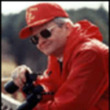Golden Buddha
Description
More Details
Excerpt
Similar Series From Novelist
Similar Titles From NoveList
Similar Authors From NoveList
Published Reviews
Booklist Review
It all started with Raise the Titanic (1976)--the point at which avid readers of adventure fiction date their fanship with Cussler. This, his third book with Dirgo, is the first novel in a new series called the Oregon Files. The cast of characters is headed by oneuan Cabrillo, the so-called chairman of the board of the Oregon, ostensibly a regular hauler but really a state-of-the-art intelligence-gathering ship that carries secret cargo and is armed with missiles and torpedoes. Working for the CIA, Cabrillo and a crew of former naval officers have been asked to return Tibet to the control of the Dalai Lama by making a deal with the Chinese and the Russians. This depends on finding a golden Buddha that contains maps and records related to Tibet's oil reserves. There's lots of talk about modern technology and stolen art, and the novel has its share of narrow escapes. What is evident from the start is that the good guys will prevail in the end, but even with the dearth of suspense, Cussler fans won't be disappointed. --George Cohen Copyright 2003 Booklist
Publisher's Weekly Review
Cussler and Dirgo, coauthors of two nonfiction books (The Sea Hunters; The Sea Hunters II) team up this time to debut a new action-filled series, dubbed the Oregon Files, equal to any in the Cussler franchise. An organization of intelligent and superbly proficient mercenaries, known as the Corporation, is headquartered on the ship Oregon, a seagoing marvel of science and technology disguised as an ancient, rust-bucket cargo vessel. The leader of the Corporation-cool, brainy Chairman Juan Cabrillo-explains the mission of his organization: "We were formed to make a profit, that's for sure, but as much as we like the money, we are also cognizant of the chances that arise for us to somehow right the wrongs of others." They've been secretly hired by the U.S. government to find and acquire an ancient statue known as the Golden Buddha, stolen from the Dalai Lama upon his ouster from Tibet by the Chinese in 1959. An intricate plan is then set in motion culminating in the defeat of the Chinese in Tibet and the ascension of the Dalai Lama to his rightful place as the leader of the country. The list of characters, both good and evil, is long and sometimes confusing, but a useful directory is supplied. Cabrillo and crew are adept at high finance and diplomacy, playing the Russians off against the Chinese and winning over the United Nations. But it's the technology, real and imagined, that steals the show with awe-inspiring secret weapons and spy gear that the Defense Department would kill for. Readers will burn up the pages following the blazing action and daring exploits of these men and women and their amazing machines. (Oct.) (c) Copyright PWxyz, LLC. All rights reserved
Library Journal Review
The cargo ship Oregon, which made a cameo appearance in Cussler's Flood Tide, stars in this first book of a new series. With his team, Corporation chairman Juan Cabrillo travels the world in a ship that looks beat up but is actually a complete state-of-the-art spy vessel. The Corporation's latest mission will force them to steal a golden Buddha worth millions and attempt to get the Dalai Lama back into power in Tibet. What's more, this mission must be pulled off in four days. If Cussler's books about NUMA (National Underwater & Marine Agency) are James Bond-style stories set on the ocean, then this title is a print version of the television show Mission Impossible, as evidenced by the outrageous plan, the meticulous timing, and even the peeling off of a latex face mask. Fans of Cussler will not be disappointed. For all library collections.-Jeff Ayers, Seattle P.L. (c) Copyright 2010. Library Journals LLC, a wholly owned subsidiary of Media Source, Inc. No redistribution permitted.
Kirkus Book Review
Sailing the high seas with Cussler once again. Cussler's first mate on the computer, Craig Dirgo, also copilot for The Sea-Hunters (1996) and The Sea-Hunters II: More True Adventures with Famous Shipwrecks (2002), signs on for his first tour as same for Cussler's fiction, joining him in a new paperback series featuring the Oregon files. Cussler's other sometimes-paperback fiction series, from the NUMA files (but featuring Kurt Austin rather than Dirk Pitt) is co-written by Paul Kamprecos (Fire Ice, 2002). Along with the ghosted and long-running Robert Ludlum and Harold Robbins industries, all this says something about today's thriller and adventure fiction simply as product--although let's remember that Alexandre Dumas built a giant factory of ghosts for churning out romances. The Oregon files turn on a secret ship captained by the mysterious Juan Cabrillo. Disguised as a freighter for hauling lumber, the ship bristles with electronic intelligence gear, is fantastically well-armed, and flies the Iranian flag--an American spy ship flies an Iranian flag? Object: to grab Tibet from the Chinese and Russians and return it to the Dalai Lama. Honestly fabulous. Copyright ©Kirkus Reviews, used with permission.
Booklist Reviews
It all started with Raise the Titanic (1976)--the point at which avid readers of adventure fiction date their "fanship" with Cussler. This, his third book with Dirgo, is the first novel in a new series called the Oregon Files. The cast of characters is headed by one Juan Cabrillo, the so-called chairman of the board of the Oregon, ostensibly a regular hauler but really a state-of-the-art intelligence-gathering ship that carries secret cargo and is armed with missiles and torpedoes. Working for the CIA, Cabrillo and a crew of former naval officers have been asked to return Tibet to the control of the Dalai Lama by making a deal with the Chinese and the Russians. This depends on finding a golden Buddha that contains maps and records related to Tibet's oil reserves. There's lots of talk about modern technology and stolen art, and the novel has its share of narrow escapes. What is evident from the start is that the good guys will prevail in the end, but even with the dearth of suspense, Cussler fans won't be disappointed. ((Reviewed September 1, 2003)) Copyright 2003 Booklist Reviews
Library Journal Reviews
The cargo ship Oregon, which made a cameo appearance in Cussler's Flood Tide, stars in this first book of a new series. With his team, Corporation chairman Juan Cabrillo travels the world in a ship that looks beat up but is actually a complete state-of-the-art spy vessel. The Corporation's latest mission will force them to steal a golden Buddha worth millions and attempt to get the Dalai Lama back into power in Tibet. What's more, this mission must be pulled off in four days. If Cussler's books about NUMA (National Underwater & Marine Agency) are James Bond-style stories set on the ocean, then this title is a print version of the television show Mission Impossible, as evidenced by the outrageous plan, the meticulous timing, and even the peeling off of a latex face mask. Fans of Cussler will not be disappointed. For all library collections.-Jeff Ayers, Seattle P.L. Copyright 2003 Reed Business Information.
Publishers Weekly Reviews
Cussler and Dirgo, coauthors of two nonfiction books (The Sea Hunters; The Sea Hunters II) team up this time to debut a new action-filled series, dubbed the Oregon Files, equal to any in the Cussler franchise. An organization of intelligent and superbly proficient mercenaries, known as the Corporation, is headquartered on the ship Oregon, a seagoing marvel of science and technology disguised as an ancient, rust-bucket cargo vessel. The leader of the Corporation-cool, brainy Chairman Juan Cabrillo-explains the mission of his organization: "We were formed to make a profit, that's for sure, but as much as we like the money, we are also cognizant of the chances that arise for us to somehow right the wrongs of others." They've been secretly hired by the U.S. government to find and acquire an ancient statue known as the Golden Buddha, stolen from the Dalai Lama upon his ouster from Tibet by the Chinese in 1959. An intricate plan is then set in motion culminating in the defeat of the Chinese in Tibet and the ascension of the Dalai Lama to his rightful place as the leader of the country. The list of characters, both good and evil, is long and sometimes confusing, but a useful directory is supplied. Cabrillo and crew are adept at high finance and diplomacy, playing the Russians off against the Chinese and winning over the United Nations. But it's the technology, real and imagined, that steals the show with awe-inspiring secret weapons and spy gear that the Defense Department would kill for. Readers will burn up the pages following the blazing action and daring exploits of these men and women and their amazing machines. (Oct.) Copyright 2003 Reed Business Information.



















































